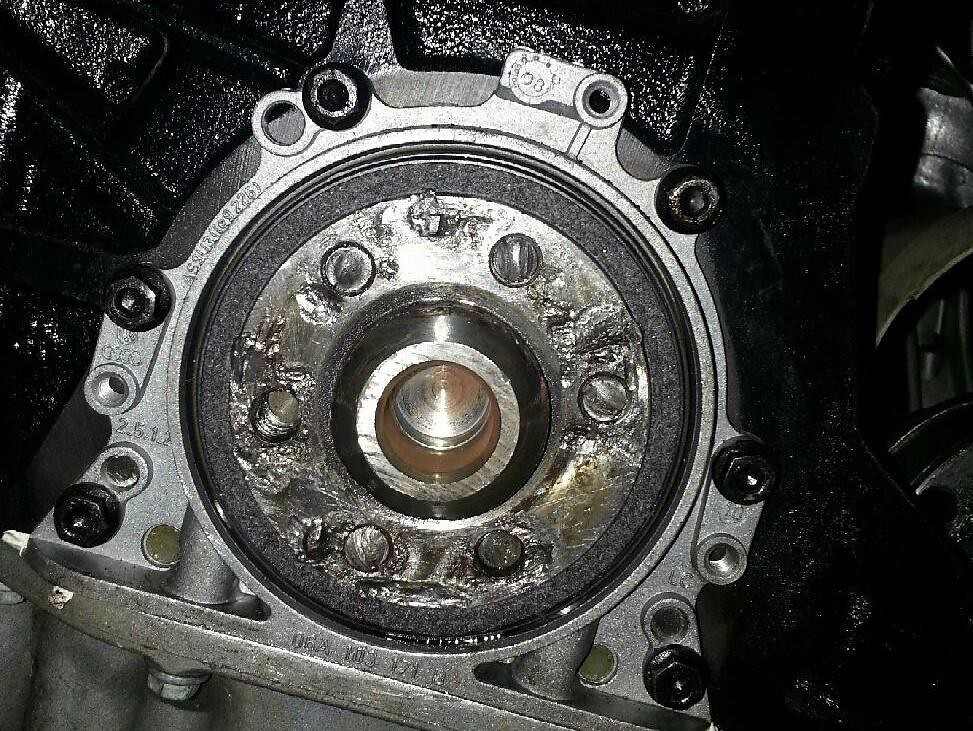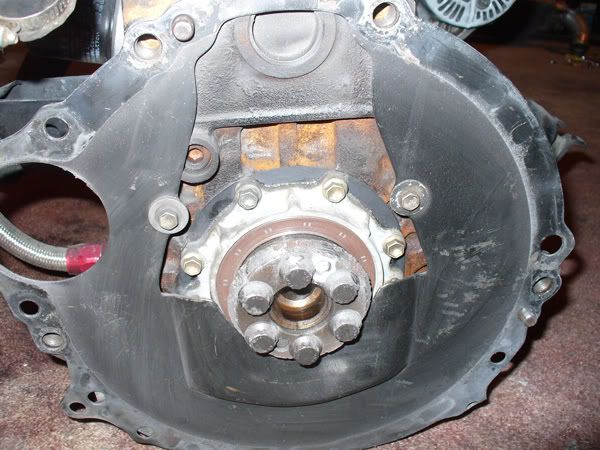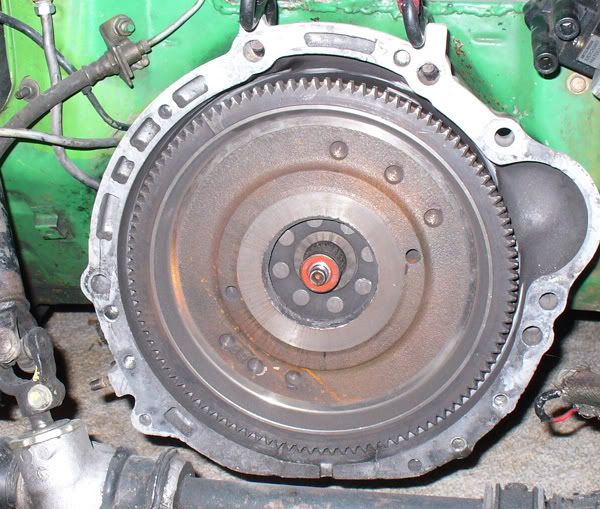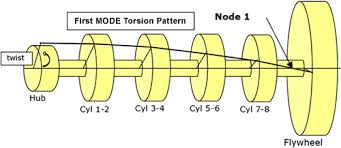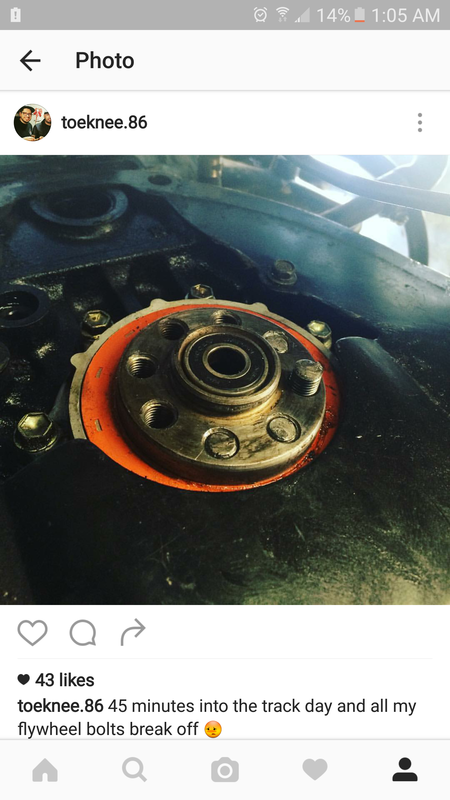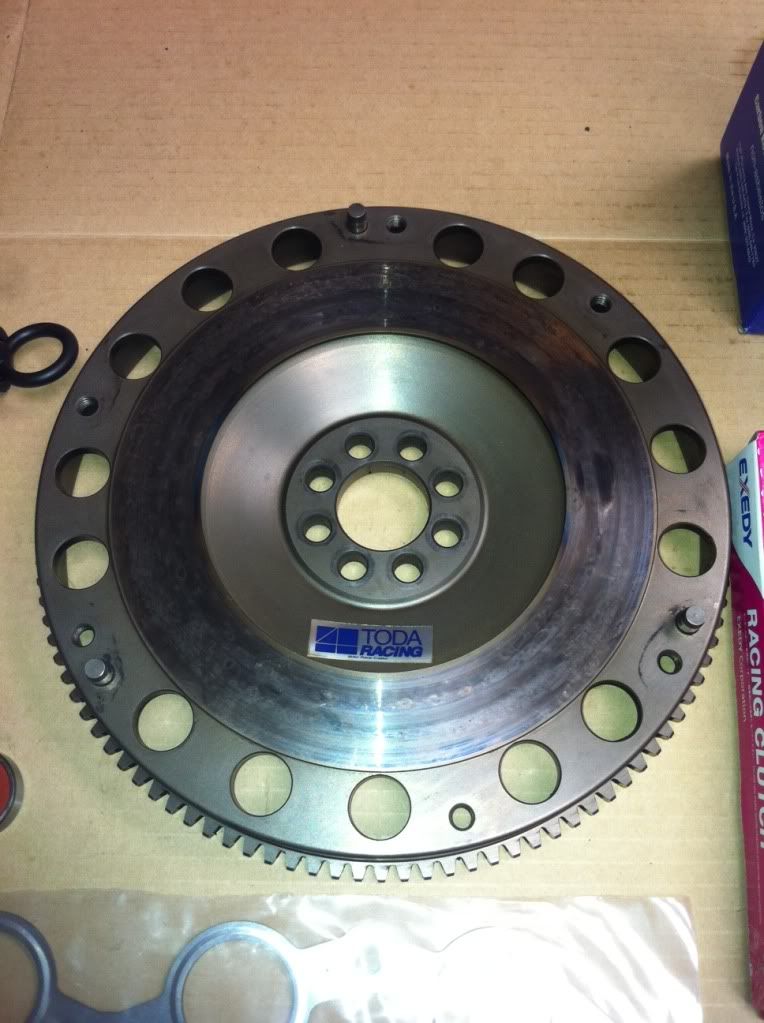bolts that I put safely away so that they wouldn't get lost... I gave up and
ordered a set of ARP bolts. This got me thinking about what sort of guidelines
should be applied when deciding whether or not to upgrade the more important
bolts that hold an engine together.
For example, the Toyota OEM flywheel bolts are a well made quality item, and
I had fully intended cleaning and reusing them. However, since I couldn't find
them, I did a bit of reading to see if I could find any techincal articles on just
how increasing the torque/power transmitted by the clutch affects the stress
on the flywheel bolts.
Not unsurprisingly, I found a lot of psuedo-technical BS from people selling
fancy bolts; a ton of opinions from people who wouldn't know a high tensile
bolt from a tuning fork; the usual hand wringing from the merchants of doom
who think reusing a bolt is certain to allow some part of your vehicle to fly
apart at high speed causing death and destruction. But no real tech stuff
It seems that this is a subject not much researched, and one where there is
more misinformation than hard fact. Flywheel bolts can fail for a variety of
reasons... over tightened, under tightened, wrong bolt for the job, too short,
too long, used a washer, didn't use a washer etc. But more interesting is the
possibility that the number of cylinders can have a major effect... 4-cylinder
engines being the worst for vibration.
So to the point
problem relate to using OEM bolts on a high revving NA or turbo engine ?
Let me hear the horror stories from all you one-legged guys
Cheers... jondee86

